#mayfly
Photo
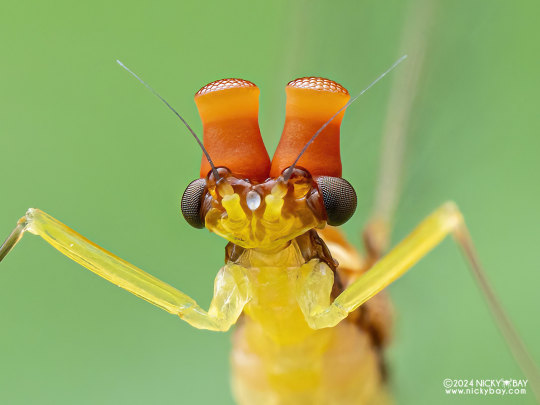



Male small mayfly, Baetinae, Baetidae
Male small mayflies in the family Baetidae differ from females in that they have seven eyes rather than five - 3 simple eyes, 2 compound eyes,and 2 turbinate eyes on top of the head. These upward-facing eyes are thought to be used for spotting females during aerial mating.
Photographed in Malaysia by Nicky Bay // Website // Facebook
Shared with permission; do not remove credit or re-post!
#animals#curators on tumblr#insects#bugs#mayfly#small mayfly#baetinae#baetidae#ephemeroptera#one nice bug
2K notes
·
View notes
Text
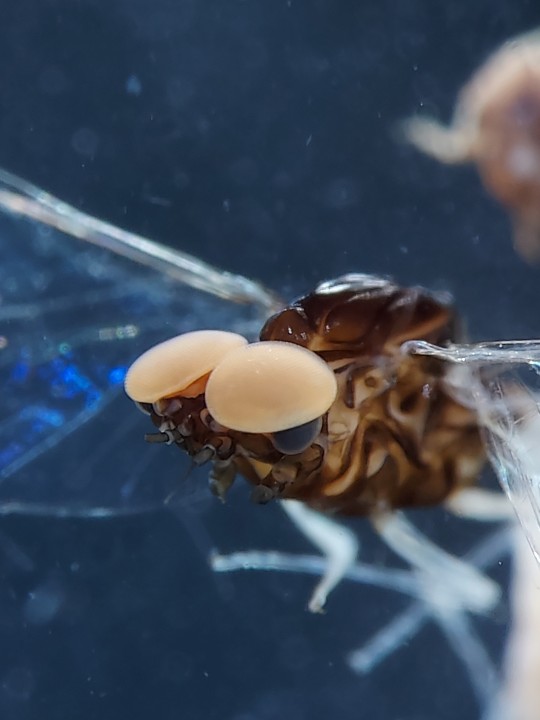
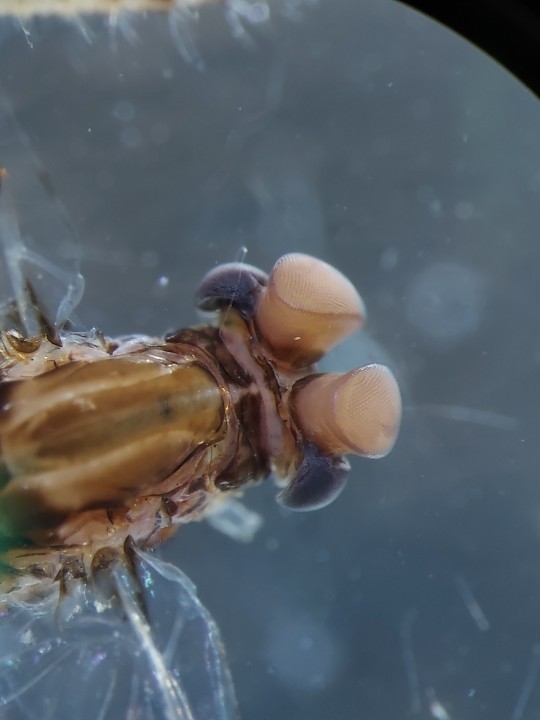
nothing better than stupid mayfly eyes
1K notes
·
View notes
Text

A mudwing cooldown doodle that I ended up liking more then I thought I would
#mudwing#wof#inspired by that one image of the caiman with butterfly’s on it head & actual pose was ref from an alligator#this was a cooldown doodle after school .. I wanna do more cooldown doodles like this it was super fun to do#tideart#doodle#mayfly#<- shes my fav mudwing so I’m deciding this is her for no reason then I want it to be
984 notes
·
View notes
Text
EMBROIDERED SWEATSHIRT PREORDERS OPEN!


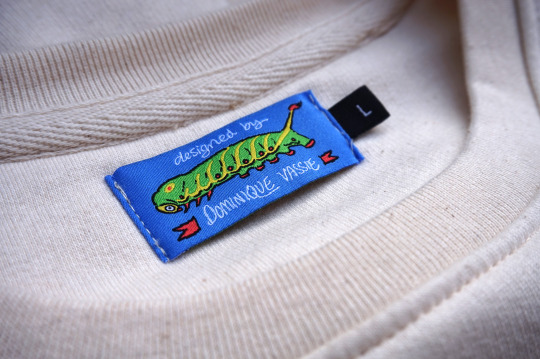
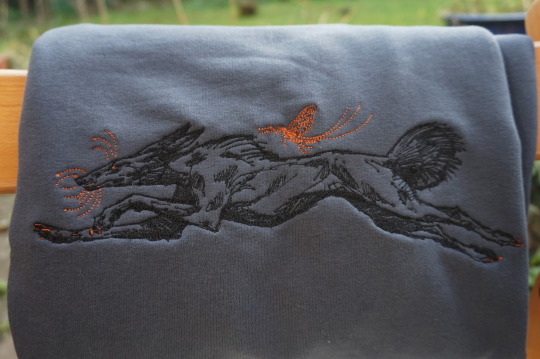

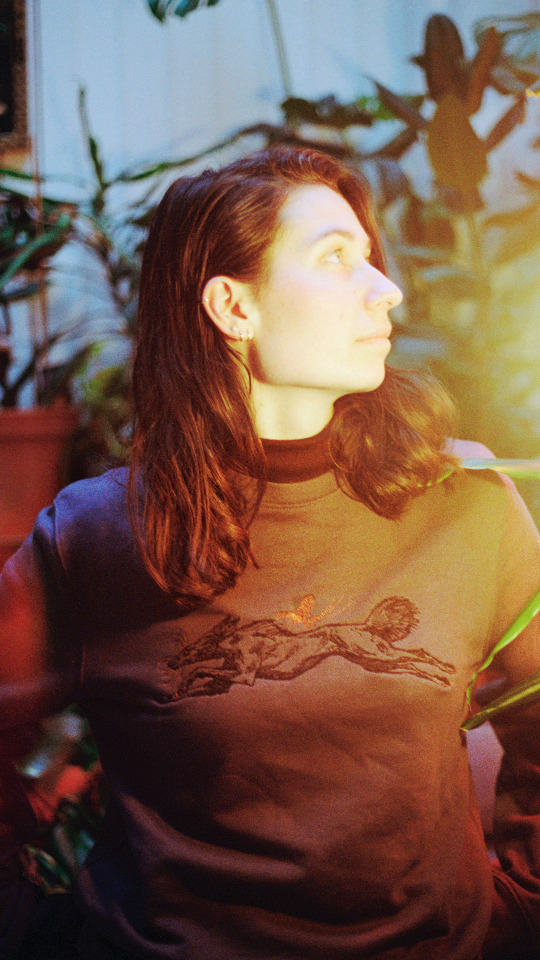
Something a bit different: finally launching my first embroidered design in collaboration with the wonderful 1831 Studio, London! Featuring a funky speedy creature and a mayfly. 𓃩𓆤
Preorders will close in 2 weeks at 5pm UK time on Thurs 4th April 🌸
------------------------------------------------------
1831 has done such a wonderful job in translating my sketchy lines into thread. These cosy sweatshirts are organic cotton and will be made to order to minimise clothing waste. There are two colourways: black and gold on off-white or the more subtle black and burnt orange on grey.
If you live in the UK, there is also an option to send in/drop off a piece of clothing you already own to have this design stitched onto it.
------------------------------------------------------
Please pre-order in my online shop! 🌱🌻🌸
------------------------------------------------------
These will be handled by 1831 Studio directly so any other items in the shop will be sent separately. Thank you for the lovely support as always! ❤️
Film photos by Ryan O'Reilly / @ardeavalley
#sweatshirt#embroidery#digital embroidery#jumper#sweater#clothing#apparel#creature#animal#mayfly#animal art#drawing#fashion#artists on tumblr
206 notes
·
View notes
Text

mayfly monster Gerojim from King-Ohger ep. 8
(looks like he ripped a little hole in his pants there)
191 notes
·
View notes
Text
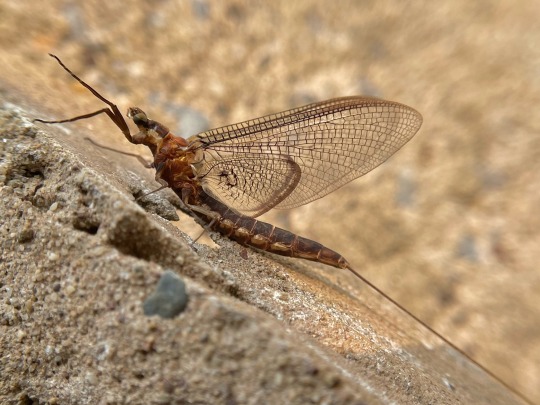
I had an unexpected visitor the other morning! this is Hexagenia bilineata, a giant mayfly. a strange and ancient river fairy perhaps
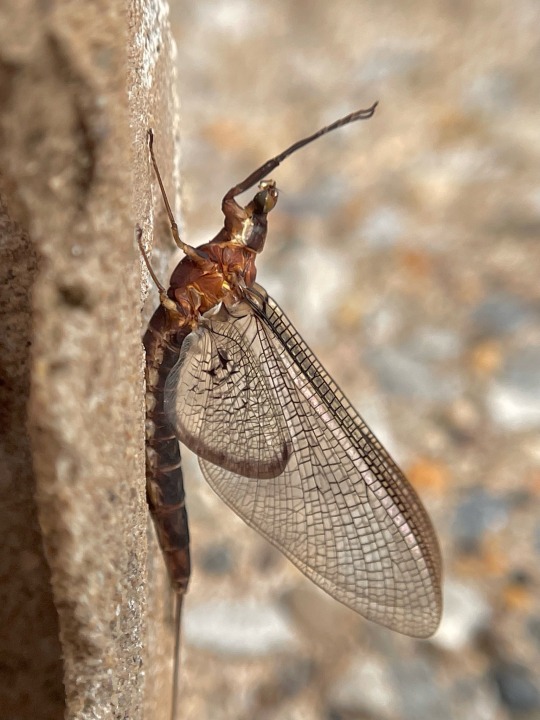
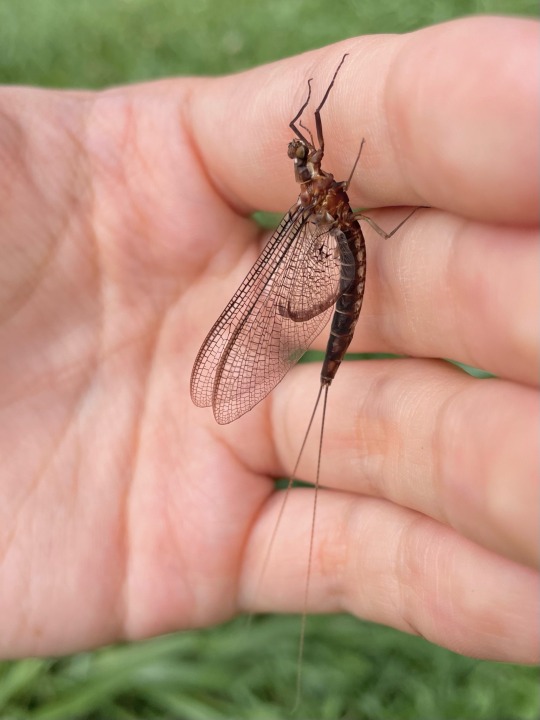
I don’t live too close to a suitable body of water, but it seems they can be lured far away from their breeding aggregations by artificial lights. they live for just a few hours as adults, emerging at dusk to mate and die before morning, which meant that getting lost and finding me was the last thing this poor lady ever did.

I’ve kept her and will pin her to preserve this chance encounter. if I ever meet one again I hope it’ll be closer to a river where they belong
256 notes
·
View notes
Text


some creatures! drew them all as part of my last internship project at the nature center. they'll be used for identifying different animals that are found in the local pond :-)
click for better quality!
#art#digital art#animal#insect#bug#bugblr#water strider#whirligig#fishing spider#backswimmer#water boatman#midge#mosquito#diving beetle#toebiter#water scorpion#tadpole#dragonfly#mayfly#damselfly#leech#water mite#mystery snail#ramshorn snail#hellgrammite#amphipod#flatworm#isopod#crayfish#hall of fame
191 notes
·
View notes
Text
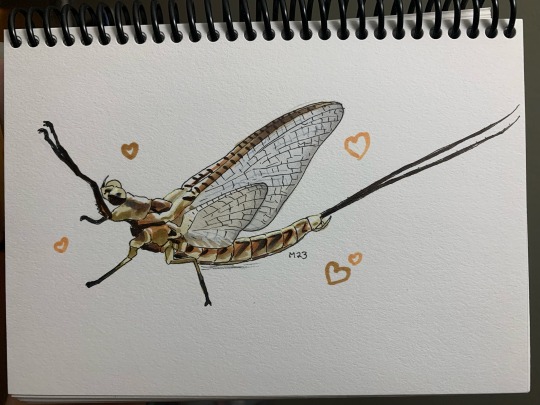
Mayfly ✨✨✨
195 notes
·
View notes
Text
StrayTeez collab incoming!
Mayfly!
A K-Stay just uploaded this earlier so we won't see the full thing til it airs.
#ateez#stray kids#strayteez#skz#mayfly#hongjoong#seonghwa#yunho#yeosang#choi san#mingi#wooyoung#jongho#bang chan#lee know#han jisung#changbin#felix#hyunjin#i.n.#jeongin
63 notes
·
View notes
Text


moar mayfly
context for the first two doodles is that i thought about a possible reason as to why brackens' mouths are never visible. thinking they only open them to eat (which for most animals, eating is a time theyre especially vulnerable), when they're extremely stressed, or their claws are unavailable or have been apprehended, something along those lines
anyhow the crew mayfly is apart of does routine checkups after each mission, just to make sure everyone is in good health. mayfly doesnt like these checkups because she's an especially anxious bracken, so alongside the anxiety of having a part of it that is only used when she's calm and this is beint seen by NEW PEOPLE, it doesn't bode well with it at all
anyway everyone look at her NOW
#marrsbarrs art#lethal company#lethal company oc#lethal company bracken#bracken#oc#mayfly#spring#yeah spring is there too#i probably overreacted with being hesitant to post the first one#also idk why her horns are so big with the first one my god
51 notes
·
View notes
Text

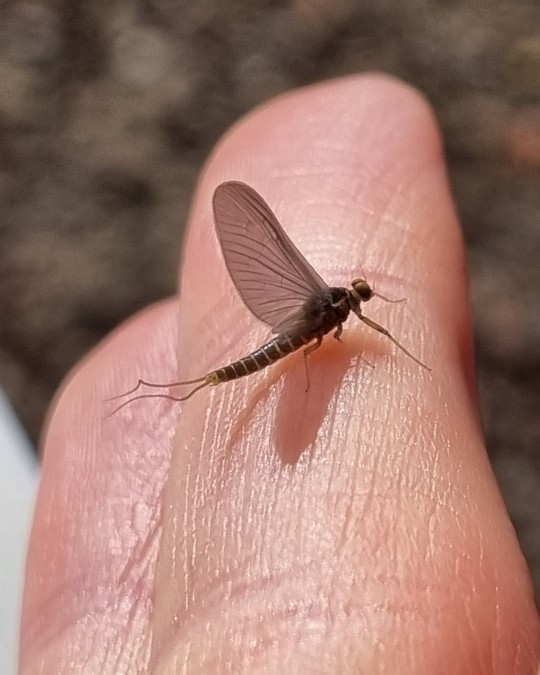
@thots-to-the-void submitted: Had this funky little fella seek shelter from the wind on my hand last week. Had a lovely time reading together till the wind subsided, found in southern Bavaria, Germany!
A male mayfly! I hope he successfully found a partner to make more mayflies before moving on to the great buggy beyond :)
143 notes
·
View notes
Text
Wet Beast Wednesday: aquatic insect larvae
This Wet Beast Wednesday is going to be different than usual. Instead of an in-depth overview of a specific species or group of species, I'm going to give a general overview of aquatic insect larvae as a whole and then showcase some groups of insects. I'm going to focus on insects that have an aquatic larval stage and terrestrial adult stage, saving adult aquatic insects for another post.
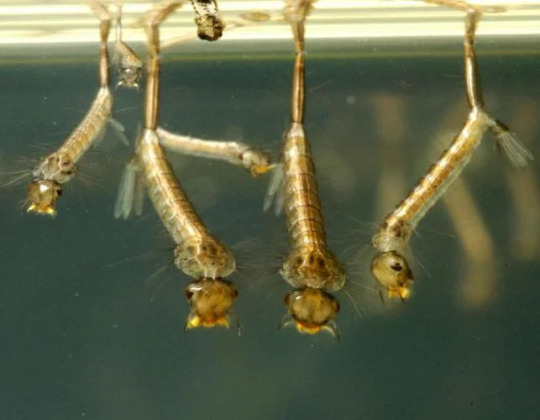
(Image ID: a group of mosquito larvae. They are yellowish bugs with long, slender bodies, no visible limbs, small heads, and feathery appendages from their rear ends. From the back of the abdomen, a snorkel-like appeadage attaches to the surface of the water, using surface tension to allow the larvae to hang from the surface. End ID)
Insects are basically the most successful group of animals in the history of life on Earth and have adapted to live in just about every terrestrial habitat. It should not be much of a surprise than that they have also moved into the water. More specifically, fresh water as almost all aquatic insects inhabit fresh or maybe brackish water. Only the water strider genus Halobates are truly marine. Some species of insect are aquatic for their entire lives, some are primarily terrestrial but able to swim, and some are aquatic only for their larval stage of life. These aquatic larvae species are generally agreed to have evolved from fully terrestrial ancestors. The adaptation of partially returning to the water has evolved independently many times in many different clades of insect and so different species use different strategies and adaptations. It is possible that aquatic larvae evolved in response to high competition for resources on land. If multiple species are competing over the same resources during their larval stages but one of those species manages to adapt to a whole new environment, that species will now have abundant access to resources the other species are unable to get to. Because of the very different lifestyles required for aquatic and terrestrial animals, aquatic larvae often look very different than their adult forms.
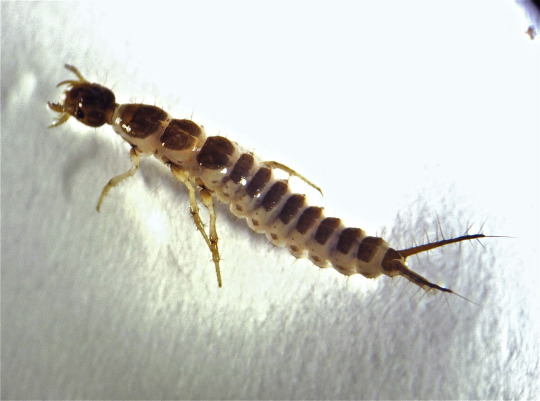
(Image: an aquatic beetle larva. It looks nothing like an adult beetle, instead being a long, slender insect with no wings, multiple body segments, and two hairy appendages at the base of the abdomen. End ID)
Aquatic larvae serve important roles in their ecosystems. Many are herbivores or detritivores that consume algae and bits of biological material, helping recycle nutrients and clean the water. Some are predators that hunt smaller invertebrates or plankton. Importantly, aquatic insect larvae provide a major food source for larger fish, invertebrates, birds, and so on. Some species can be considered keystone species, vital to their ecosystems. Many species are highly sensitive to changes in their environment, allowing them to act as indicator species for the health of their ecosystems. The trio of mayflies, stoneflies, and caddisflies are very commonly used as indicators of pollution as all three are highly sensitive to pollutants. A stream with few mayflies, stoneflies, or caddisflies but plenty of less sensitive species is likely to be polluted.
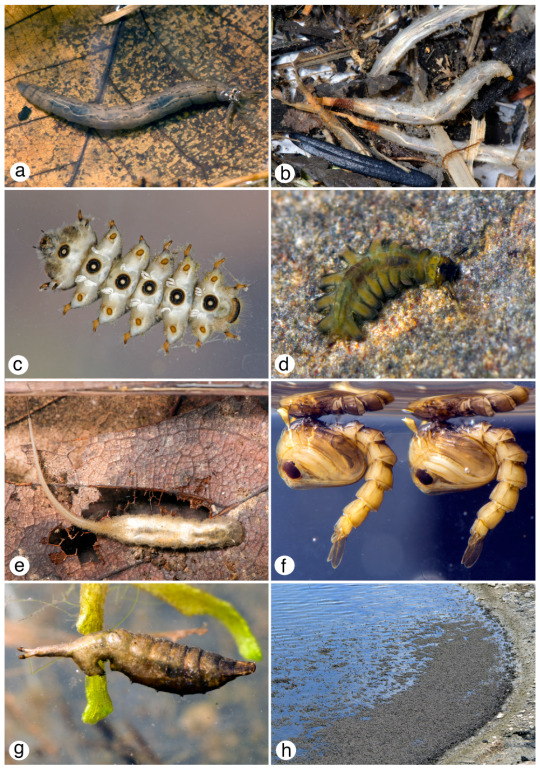
(Image ID: a collage of aquatic larvae of multiple species in the order Diptera (true flies. They vary from slug-like to having multiple distinct body segments with legs, to looking like maggots with long tails. End ID. Source)
Mayflies (order Ephemeroptera) are among the oldest lineages of winged insects, bearing traits that they first flying insect also had. Juvenile mayflies are technically not larvae, but nymphs. The difference between a larva and a nymph is that nymphs look much more like the adult stage than larvae do. Mayfly nymphs lack the wings of adults, but have external gills growing from the sides of their abdomens. Mayfly nymphs can be identified by three appendages called cerci that emerge from the back of the abdomen. They are bottom-dwellers that typically live under rocks and other objects or amid plants. Most are herbivores, feeding mainly on algae. Months to years after hatching (species dependent), mayflies will float to the surface and go through a molt to a stage called the subimago. Uniquely among insects, mayflies go through two final winged molts. The first is to a not sexually mature stage called the subimago, then they quickly molt again into a fully mature imago stage. These molts happen in sync, resulting in hundreds to thousands of mayflies appearing all at once and swarming together to mate. Famously, adult mayflies exist only to mate and die. Their digestive systems are non-functional and few species last past a few days.

(Image: a mayfly nymph on a rock. It is a yellow bug with no wings, a long abdomen, and thick, grasping legs. Three long, hairy cerci emerge from the back. Along the side of the abdomen are multiple pairs of white, feathery gills. End ID)
Stoneflies (order Plecoptera) also have nymphs and can be quite difficult to tell apart from mayfly nymphs if you don't know what to look for. One of the biggest differences is that their gills are located by the base of the legs rather than along the abdomen. Like mayflies, stoneflies are some of the most primitive winged insects, but mayflies are Paleopterans (the earliest wings insects) while stoneflies and most other winged insects are Neopterans. The main difference is that Neopterans can flex their wings over their abdomens while Paleopterans cannot, and must hold their wings either out to the side or up in the air. Like with Mayflies, many adult stoneflies have nonfunctional digestive systems and exist only to mate and die.

(Image: a stonefly larva. It looks similar to a mayfly larva, but has a shorter abdomen, gills along the base of the legs, and only two cerci. End ID)
Caddisflies (order tricoptera) are the builders of the aquatic insect world. These larvae (most species anyway) can produce silk from glands near their mouths. These are used to make a variety of structures made from silk and various other materials including sand, silt, plant parts, shells, rock, and so on. Different species will seek out specific materials for their structures. There are a few types of structures, the most common of which is a tubular case that is open at both ends. The larva can carry the case with it as it crawls around and can retreat into the case for protection. The larva can draw water into one end of the case and out the other, allowing oxygenated water to flow over the gills. By moving around in the case, the larva can draw in more water. This allows the larvae to survive in water that is too oxygen-poor for other larvae. Other species build different structures including turtle-shell like domes or stationary retreats. My favorite structures are nets built with an open end into current. The current naturally brings detritus and micro-invertebrates into the net, where the larva can eat them. Caddisflies also pupate into pupa that have mandibles to cut their way out of their cases and swimming legs. Once developed, the pupae swim to the surface and molt into their adult forms. This molting is synchronized to ensure the adults emerge in swarms and can easily find mates.
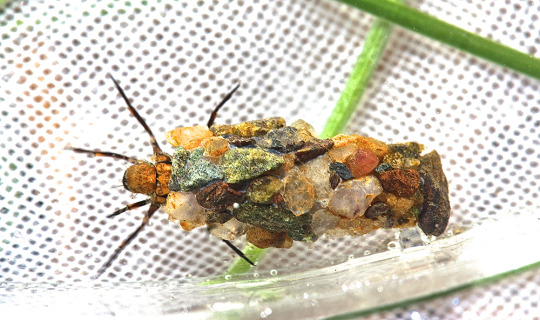
(Image ID: a caddisfly larva in its case. The case is a tube composed of pebbles of different colors stuck together with silk. The head and legs of the larva are merging from the front of the case. End ID)
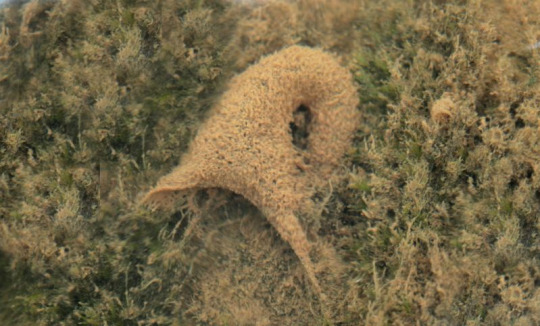
(Image: a caddisfly net. It is a structure made of silk shaped like a tube that is wide at one end and tapers toward the other. It is curved so both ends face the same way. End ID)
The order Megaloptera consists of alderflies, dobsonflies, and fishflies. All three have aquatic larvae, but their eggs are laid on land. Most species lad their eggs on plants overhanging the water so the larvae fall in once hatched, though a few lay eggs near the water's edge, forcing the larvae to crawl in. Meglaoptera have the least amount of differences between larva and adult of all holometabolous (pupa-forming) insects. The largest differences between the larvae and adults is the larvae lack wings and some species have leg-like prolegs. All species are carnivorous as larvae and feed on other invertebrates.
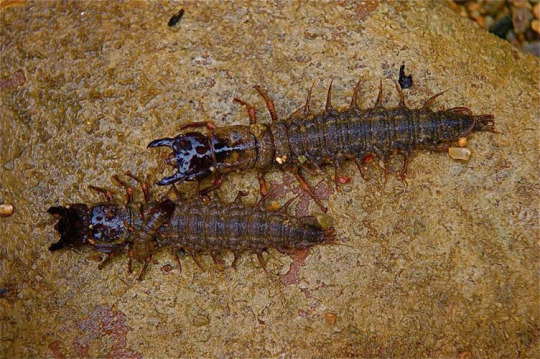
The adults don't look any less creepy
(Image: two hellgrammites, the larval form of a dobsonfly. It looks somewhat like a centipede with three pairs of limbs and a long abdomen with multiple pairs of leg-like prolegs. The head has no visible antennae, but does have a pair of powerful pincers. End ID)
Order Odonata consists of dragonflies and damselflies. These are powerful predators both as nymphs and adults. As nymphs, the juveniles are shorter and stockier than the adults, with no wings. The nymphs (or naiads) breathe through gills. In damselflies, these gills can be external, but dragonfly nymphs have their gills located in the anus. Damselflies can swim by undulating their gills, but dragonfly nymphs are restricted to crawling. The nymphs are voracious predators that will feed on anything they can catch. Most of their diet consists of invertebrates, but they will also attack small fish, tadpoles, and even salamanders.
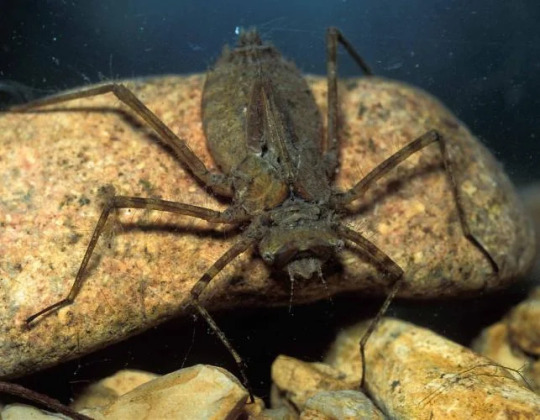
(Image ID: a dragonfly larva on a rock. Its head is similar to that of the adults, but the abdomen is much shorter and broader and the legs are longer. It has no wings and is brown all over. End ID)
The groups of insects I covered today (plus the stoneflies) all have exclusively or near-exclusively have aquatic larvae while the adults are terrestrial. In other groups, aquatic larvae may be present in some species while others have terrestrial larvae. For example, a great many members of the order Diptera (true flies) have aquatic larvae including all mosquitos, while other members of the order have fully terrestrial larvae. In addition there are species of beetle (order Coleoptera), moth (order Lepidoptera), lacewing (order Neuroptera), and scorpionflies (order Mecoptera) that have aquatic larvae and some species of the true bugs (order Hemiptera) have aquatic larvae and aquatic adults, including water skaters, water scorpions, and giant water bugs. Aquatic insects are so prevalent that it is rare to find any lasting body of water that doesn't host some aquatic larvae or adults. Even incredibly stagnant and filthy water can host aquatic insect larvae, as shown by the notorious rat-tailed maggots, who love stagnant water and breathe through snorkels. Many species require very specific conditions and there are species of insect who exclusively grow their larvae in specific streams or lakes. Because of this, conservation of these bodies of water is vital to their survival and pollution, damming, and other factors can destroy whole species.
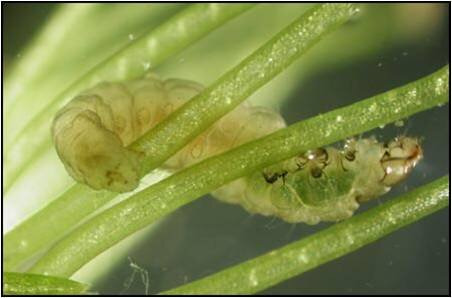
(Image: an aquatic moth larva. It looks very similar to a green land caterpillar, with none of the fancy elements many land species have. It is translucent and wrapped around some aquatic plant stems. End ID)
#wet beast wednesday#insects#insect larvae#aquatic insect larvae#larva#pupa#mayfly#stonefly#caddisfly#dobsonfly#hellgrammite#dragonfly#damselfly#freshwater ecology#ecology#biology#zoology#invertebrate#invertebrates#animal facts#informative#bug#bugs
32 notes
·
View notes
Text

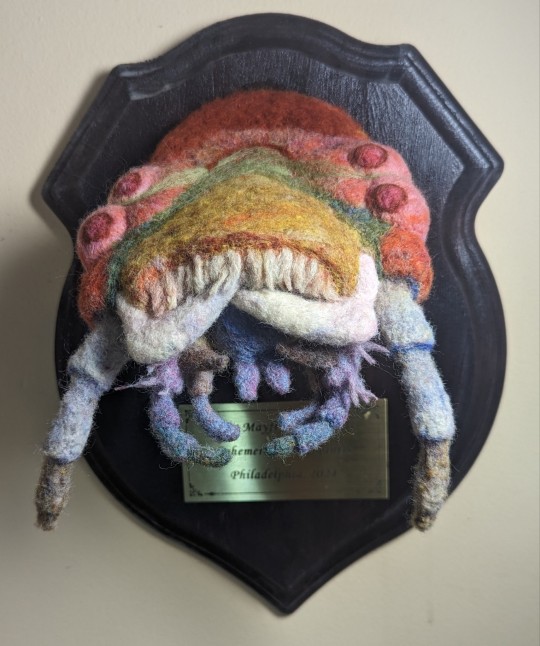
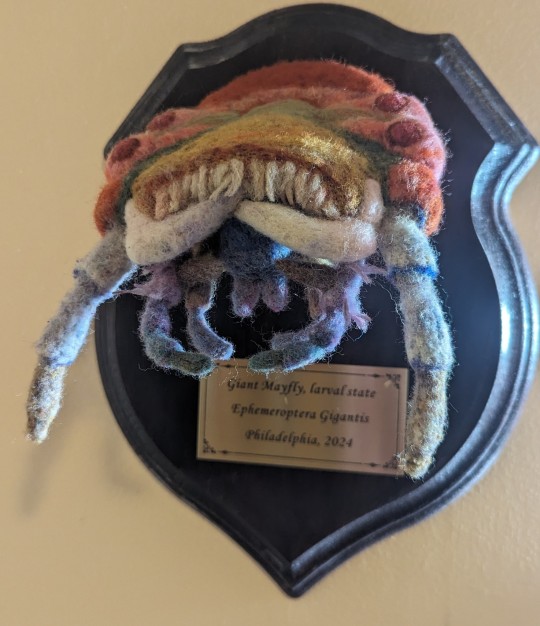
40 notes
·
View notes
Text

a mayfly i met in the summer
1K notes
·
View notes
Text

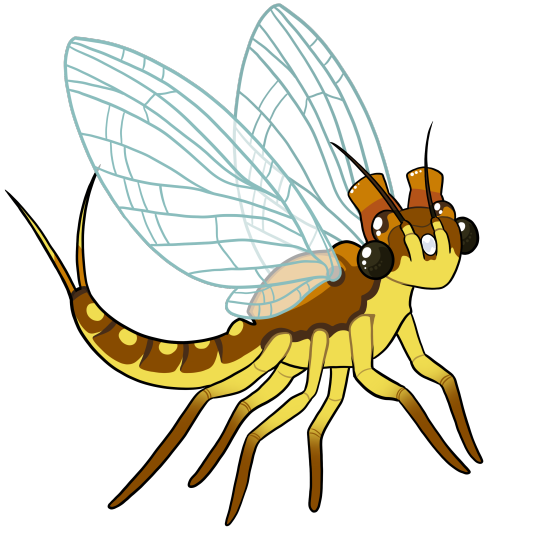
Saw this really cool bug post and wanted to draw some art of it! I love that it looks like it has goggles (its actually extra eyes!!)
(The second pic I also made into a redbubble sticker)
Hope you enjoy, and have an AWESOME day!!
20 notes
·
View notes
Text
Happy 46th birthday

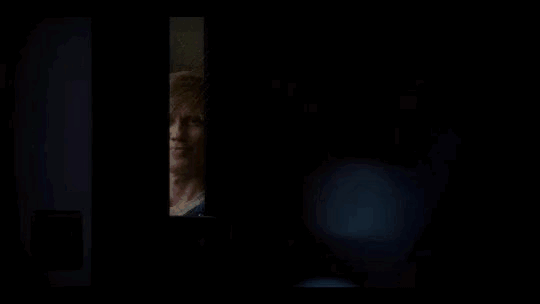


54 notes
·
View notes